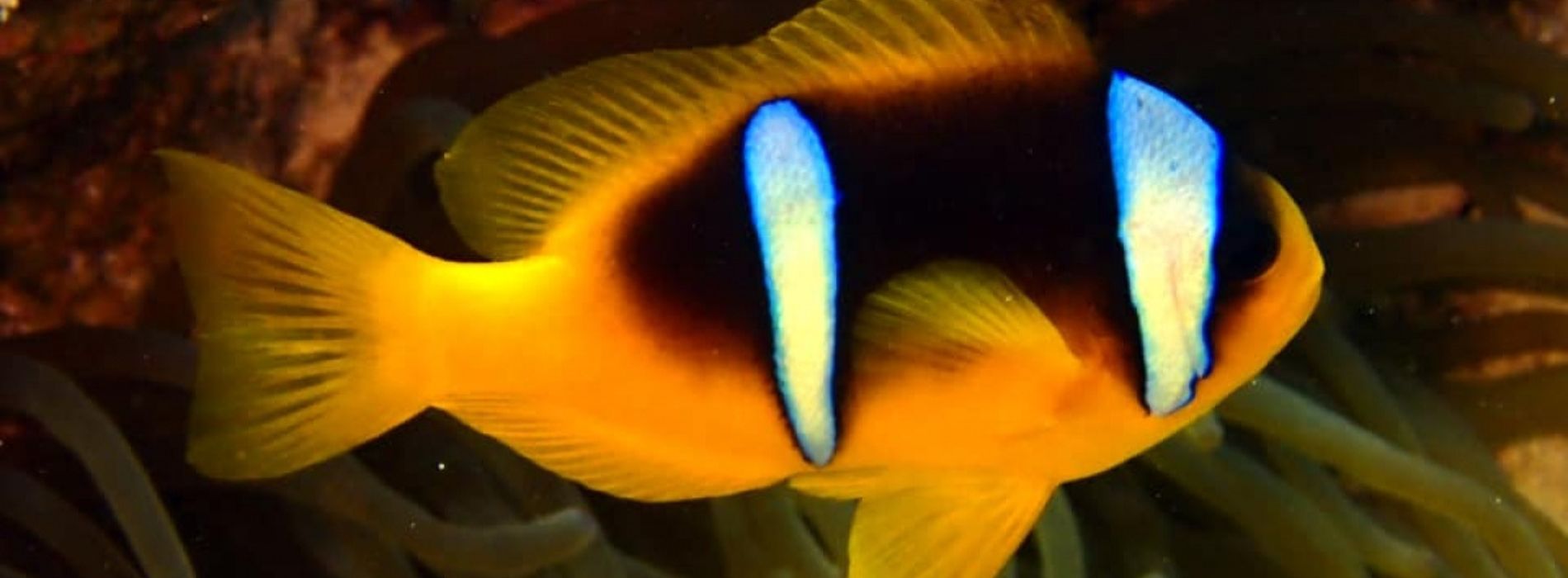Welcome to the captivating world of the Red Sea Clownfish! This enchanting marine creature, scientifically known as Amphiprion bicinctus, is commonly referred to as the Red Sea or two-banded anemonefish. With its vibrant colors and fascinating behavior, this fish has captured the hearts of ocean lovers around the world.
In this article, we will delve into the characteristics, distribution, and unique relationship of this creature with its host anemones. We will also explore its temperament and care requirements in a captive environment. So, let's dive in and discover the beauty and wonder of the Red Sea Clownfish.
Table of Contents
- Introduction
-
Characteristics of Red Sea Clownfish
- Coloration and Size
- Reproductive Biology
- Distribution and Habitat
- Temperament and Captive Care
- Feeding Habits
- Host Anemones
- Aquarium Host Anemones
- The Fascinating Symbiotic Relationship
- Conservation Status
- Our last words
Characteristics of Red Sea Clownfish

Coloration and Size
The Amphiprion bicinctus exhibits a stunning array of colors, ranging from yellow to honey brown. As juveniles, they possess a vibrant caudal fin with yellow, white, and black coloration, which gradually transitions to a solid yellow color as they mature into adulthood. One of the distinguishing features of this specimen is its two white vertical stripes, a head stripe and a stripe on the middle of its body. The head stripe is wedge-shaped, wider at the top than the base, making it truly unique among clownfish species.
In terms of size, females can grow up to 5.5 inches (14 cm), while males are slightly smaller, reaching a length of around 4 inches (10 cm). The two-banded anemonefish belongs to the clarkii complex, and its females are known for their impressive growth potential.

Reproductive Biology
The reproductive biology of this species is truly fascinating. Extensive studies conducted in the 1970s revealed that under specific circumstances, a male can undergo a sex change and transform into a female in as little as 26 days. This remarkable ability ensures the continuity of the species and allows for the establishment of stable breeding pairs within a group of clownfish.
In a group of Amphiprion bicinctus, a strict dominance hierarchy exists. The largest and most aggressive fish is the female, occupying the top position. Only a male and a female in a group have the ability to reproduce through external fertilization. Interestingly, they are sequential hermaphrodites, meaning they initially develop as males and later transition into females as they mature.
Distribution and Habitat

This Clownfish is primarily found in the Red Sea, Gulf of Aden, and the Chagos Archipelago. Its vibrant colors and unique markings make it a common sight in the warm waters of these regions. These fishes inhabit sheltered reefs and shallow lagoons, where they find protection and sustenance in their host anemones.
Temperament and Captive Care
In a saltwater aquarium, the two-banded anemonefish is known for its lively and active nature. Its vibrant colors and engaging behavior make it an excellent choice for larger display tanks. While generally peaceful, theses Clownfish can become territorial when they establish themselves as a mature pair. Therefore, it is advisable to house them in a tank with a minimum capacity of 30 gallons to provide ample space for their activities.

Maintaining appropriate water quality parameters is vital for their well-being. The aquarium should be equipped with efficient filtration systems and regular water changes to ensure a stable and healthy environment. Additionally, the tank should provide suitable hiding spots and ample swimming space to cater to the natural behavior of these beautiful creatures.
Feeding Habits

Amphiprion bicinctus are known to have a healthy appetite and are relatively easy to feed in a captive environment. In the wild, their diet primarily consists of crustaceans such as copepods and amphipods, algae, polychaete worms, and leftover food from their host anemone's meals.
In captivity, they can be conditioned to accept a variety of aquarium diets. They readily consume pellets, flake food, frozen Mysis shrimp, and frozen brine shrimp. Providing a varied diet helps mimic their natural feeding habits and ensures their nutritional needs are met.
Host Anemones

One of the most captivating aspects of the two-banded anemonefish is their symbiotic relationship with host anemones. In the wild, these clownfish form a mutually beneficial bond with sea anemones, which provides them with protection and a reliable food source.
They can associate with various species of host anemones. The primary host anemone for this Clownfish is the Bubble Tip Anemone (Entacmaea quadricolor). They can also be found in the Beaded Anemone (Heteractis aurora), Sebae Anemone (Heteractis crispa), Magnificent Sea Anemone (Heteractis magnifica), and Haddon's Carpet Anemone (Stichodactyla haddoni).
Aquarium Host Anemones
While the Amphiprion bicinctus do not require host anemones to survive or thrive, they readily accept them in most cases. The Bubble Tip Anemone (Entacmaea quadricolor) is an excellent choice as a host for Red Sea Clownfish in captivity. Not only is it popular and hardy, but it also closely resembles their natural host anemone in the wild.
Other suitable host anemones for them include the Beaded Anemone (Heteractis aurora), Sebae Anemone (Heteractis crispa), Magnificent Sea Anemone (Heteractis magnifica), and Haddon's Carpet Anemone (Stichodactyla haddoni). These anemones provide a safe haven for the clownfish, offering protection from predators and a steady supply of food.
The Fascinating Symbiotic Relationship

The relationship between Red Sea Clownfish and their host anemones is a marvel of nature. The clownfish find refuge within the stinging tentacles of the anemone, which protects them from predators. In return, the clownfish defend the anemone from its own predators and parasites.
The anemone also provides the clownfish with a constant source of food. They feed on the scraps left from the anemone's meals and occasionally consume dead anemone tentacles. This symbiotic relationship is a remarkable example of how different species can coexist and rely on each other for survival.
Conservation Status
The Red Sea Clownfish is currently classified as "Least Concern" by the International Union for Conservation of Nature (IUCN). While they face no immediate threat, it is important to ensure the conservation of their natural habitats and the protection of their host anemones.
By preserving the delicate balance of marine ecosystems and practicing responsible aquarium keeping, we can contribute to the long-term well-being of theses Clownfish and other marine species.
Our last words
The two-banded anemonefish, with its vibrant colors and captivating behavior, is a true marvel of the ocean. From its striking two white stripes to its ability to change sex, this enchanting creature never fails to mesmerize. Its symbiotic relationship with host anemones exemplifies the intricacies of nature's interconnectedness.
if you want to learn more about clownfish, feel free to visit here !
We hope you've enjoyed this article about the Red Sea Clownfish !
Feel free to subscribe to our private newsletter to receive more exclusive article. You will also receive a 10% bonus discount for our sea world catalogue. You will be notified via email whenever we release a new wonderful jewelry piece of the ocean.
Feel free also to go check out our website, we provide the best sea content and we offer you the best nautical jewelry all around the globe !





















